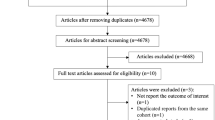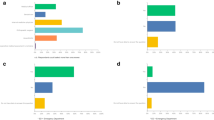Key Summary Points
To identify factors influencing Discharge Directly Home (DDH) from an acute hospital following hip fracture, as opposed to Discharge to an Alternative Location (DAL).
AbstractSection FindingsYounger patients who were independently mobile pre-fracture were more likely to be DDH. Timely surgery with early post-operative mobilisation and a shorter length of stay increased the odds of DDH.
AbstractSection MessageThe Irish Hip Fracture Standards incorporate 2 out the 3 modifiable factors identified in this paper, which reinforces the importance of the IHFS in improving patient outcomes.
Abstract
Purpose
Although home continues to be the place from which the majority of patients are admitted, less than one third of patients are Discharged Directly Home (DDH) following hip fracture. Once ready for discharge, DDH as opposed to Discharge to an Alternative Location (DAL), i.e., community care, rehabilitation facility or long-term care, is a high priority for patients and clinicians alike. Not only is DDH integral to the quality of life of patients, it is also an essential driver of the socioeconomic cost of hip fracture care.
Methods
We analysed 21,819 cases in the Irish Hip Fracture Database from 2013 to 2019. Descriptive and analytical statistics were conducted.
Results
29% (n = 6476) of patients were DDH during the study period. On multivariate analysis, the odds of DDH decreased as age increased (OR 0.28, p < 0.01, 95% CI 0.24–0.34). Patients who were independently mobile prior to fracture were 47% more likely to be DDH (OR 1.47, p < 0.01, 95% CI 1.29–1.68). Those mobilised early post operatively were 24% more likely to be DDH (OR 1.24, p < 0.01, 95% CI 1.06–1.45). Patients who waited > 72 h prior to surgery were 30% less likely to be DDH (OR 0.70, p < 0.01, 95% CI 0.56–0.88).
Conclusion
The authors identified patient characteristics that increased the likelihood of DDH, i.e., younger patients independently mobile prior to fracture, who received timely surgery and early post-operative mobilisation. The Irish Hip Fracture Standards (IHFS) incorporate 2 out the 3 modifiable factors identified, which reinforces the importance of the IHFS in improving patient outcomes.




Similar content being viewed by others
References
National Office of Clinical Audit (2020). Irish Hip Fracture Database National Report 2019. Dublin: National Office of Clinical Audit. ISSN 2565–5388. https://www.noca.ie/audits/irish-hip-fracture-database. (Accessed 21 Nov 2020)
Pitzul KB, Wodchis WP, Carter MW et al (2016) Post-acute pathways among hip fracture patients: a system-level analysis. BMC Health Serv Res 16:275. https://doi.org/10.1186/s12913-016-1524-1
Stukel TA, Fisher ES, Alter DA et al (2012) Association of hospital spending intensity with mortality and readmission rates in Ontario hospitals. J Am Med Assoc 10:1037–1045
Kelly MA, McGowan B, McKenna MJ, Bennett K, Carey JJ, Whelan B, Silke C (2018) Emerging trends in hospitalisation for fragility fractures in Ireland. Ir J Med Sci 187:601–608
Gannon B, O’Shea E, Hudson E (2008) Economic consequences of falls and fractures among older people. Ir Med J 101(6):170–173 (PMID: 18700509)
Baker PN, Salar O, Ollivere BJ et al (2014) Evolution of the hip fracture population: time to consider the future? A retrospective observational analysis. BMJ Open 4:e004405. https://doi.org/10.1136/bmjopen-2013-004405
Gamboa-Arango A, Duaso E, Malafarina V et al (2020) Prognostic factors for discharge to home and residing at home 12 months after hip fracture: an Anoia hip study. Aging Clin Exp Res 32(5):925–933. https://doi.org/10.1007/s40520-019-01273-9 (Epub 2019 Aug 3 PMID: 31377999)
Salar O, Baker PN, Forward DP, Ollivere BJ, Weerasuriya N, Moppett IK, Moran CG (2017) Predictors of direct home discharge following fractured neck of femur. Ann R Coll Surg Engl 99(6):444–451. https://doi.org/10.1308/rcsann.2017.0021 (PMID:28660828;PMCID:PMC5696970)
Sivasundaram L, Tanenbaum JE, Mengers SR, Trivedi NN, Su CA, Salata MJ, Ochenjele G, Voos JE, Wetzel RJ (2020) Identifying a clinical decision tool to predict discharge disposition following operative treatment of hip fractures in the United States. Injury 51(4):1015–1020. https://doi.org/10.1016/j.injury.2020.02.108 (Epub 2020 Feb 21 PMID: 32122627)
Barberi S, Mielli L (2018) Rehabilitation and discharge. In: Hertz K, Santy-Tomlinson J (eds) Fragility fracture nursing perspectives in nursing management and care for older adults. Springer
Deakin DE, Wenn RT, Moran CG (2008) Factors influencing discharge location following hip fracture. Injury 39(2):213–218. https://doi.org/10.1016/j.injury.2007.07.012 (Epub 2007 Dec 11 PMID: 18062969)
Pitzul KB, Wodchis WP, Kreder HJ, Carter MW, Jaglal SB (2017) Discharge destination following hip fracture: comparative effectiveness and cost analyses. Arch Osteoporos 12(1):87. https://doi.org/10.1007/s11657-017-0382-8 (PMID: 28965297)
The Royal College of Physicians (2017) National hip fracture database annual report 2018. eISBN 978–1–86016–736–2. https://nhfd.co.uk/20/hipfractureR.nsf/docs/2018Report. (Accessed 20 Oct 2020)
Zurlo A, Bellelli G (2018) Orthogeriatrics in Italy: the gruppo Italiano Di Ortogeriatria (GIOG) audit on hip fractures in the elderly. Geriatric Care 4(2):33–35
Ojeda-Thies C, Sáez-López P, Currie CT et al (2019) Spanish national hip fracture registry (RNFC): analysis of its first annual report and international comparison with other established registries. Osteoporos Int 30(6):1243–1254. https://doi.org/10.1007/s00198-019-04939-2 (Epub 2019 Mar 23 PMID: 30904929)
Leigheb F, Vanhaecht K, Sermeus W et al (2012) The effect of care pathways for hip fractures: a systematic review. Calcif Tissue Int 91:1–14
Walsh M, Ferris H, Coughlan T et al (2020) Trends in hip fracture care in the Republic of Ireland from 2013 to 2018: results from the Irish Hip Fracture Database. Osteoporos Int. https://doi.org/10.1007/s00198-020-05636-1
Aharanoff G, Barsky A, Hieber R, Zuckerman J, Koval K (2004) Predictors of discharge to a skilled nursing facility following hip fracture surgery in New York State. Gerontology 50:298–302
Maciejewski ML, Radcliff TA, Henderson WG, Cowper Ripley D, Vogel WB, Regan E, Hutt E (2013) Determinants of postsurgical discharge setting for male hip fracture patients. J Rehabil Res Dev 50(9):1267–1276. https://doi.org/10.1682/JRRD.2013.02.0041 (PMID: 24458966)
Al-Ani AN, Samuelsson B, Tidermark J, Norling A, Ekström W, Cederholm T, Hedström M (2008) Early operation on patients with a hip fracture improved the ability to return to independent living. A prospective study of 850 patients. J Bone Joint Surg Am 90(7):1436–1442. https://doi.org/10.2106/JBJS.G.00890 (PMID: 18594090)
Nanjayan SK, John J, Swamy G, Mitsiou K, Tambe A, Abuzakuk T (2014) Predictors of change in “discharge destination” following treatment for fracture neck of femur. Injury 45(7):1080–1084. https://doi.org/10.1016/j.injury.2014.02.005 (Epub 2014 Feb 15 PMID: 24613613)
Salonga- Reyes A, Scott IA (2017) Stranded: cause and effects of discharge delays involving non acute in patients requiring maintaineance care in a tertiary referral hospital general medicine service. Aust Health Rev 41(1):54–62. https://doi.org/10.1071/AH15204 (PMID: 27028335)
Sheehan KJ, Goubar A, Almilaji O, Martin FC, Potter C, Jones GD, Sackley C, Ayis S (2021) Discharge after hip fracture surgery by mobilisation timing: secondary analysis of the UK National Hip Fracture Database. Age Ageing 50(2):415–422. https://doi.org/10.1093/ageing/afaa204 (PMID:33098414;PMCID:PMC7936027)
Ferris H, Brent L, Coughlan T (2020) Early mobilisation reduces the risk of in-hospital mortality following hip fracture. Eur Geriatr Med 11(4):527–533. https://doi.org/10.1007/s41999-020-00317-y (Epub 2020 Apr 9 PMID: 32297275)
Funding
No funding, grants or financial support was received.
Author information
Authors and Affiliations
Corresponding author
Ethics declarations
Conflict of interest
The authors declare they have no conflicts of interest.
Ethical approval
Research ethics approval was obtained from the St James Hospital/ Tallaght University Hospital Research Ethics Committee, in accordance with the European Communities (Clinical Trials on Medicinal Products for Human Use) Regulations 2004 & ICH GCP Guidelines.
Informed consent
Not applicable.
Additional information
Publisher's Note
Springer Nature remains neutral with regard to jurisdictional claims in published maps and institutional affiliations.
Rights and permissions
About this article
Cite this article
Ferris, H., Brent, L., Sorensen, J. et al. Discharge destination after hip fracture: findings from the Irish hip fracture database. Eur Geriatr Med 13, 415–424 (2022). https://doi.org/10.1007/s41999-021-00556-7
Received:
Accepted:
Published:
Issue Date:
DOI: https://doi.org/10.1007/s41999-021-00556-7




